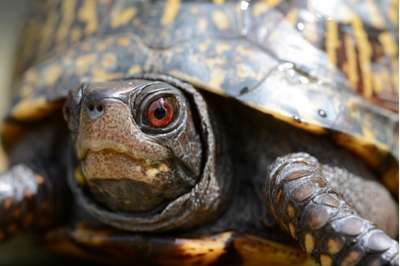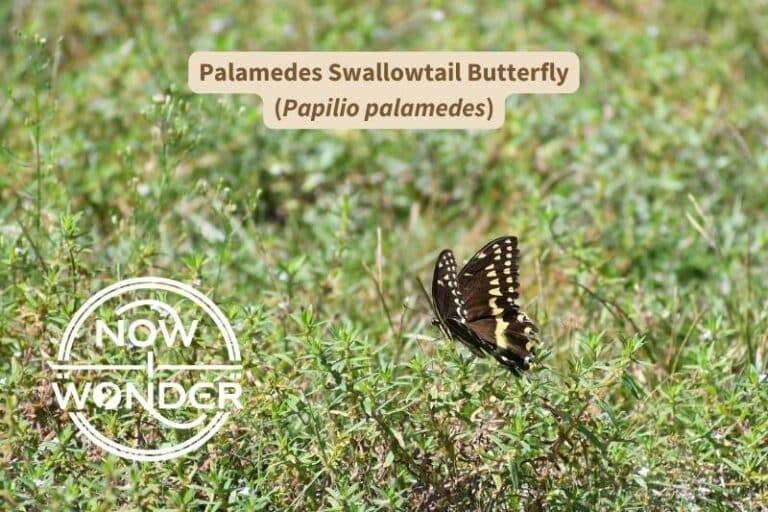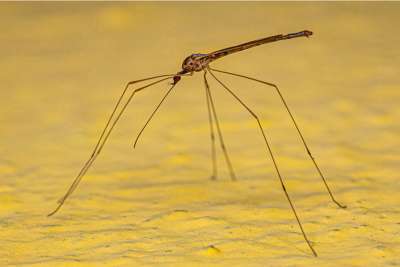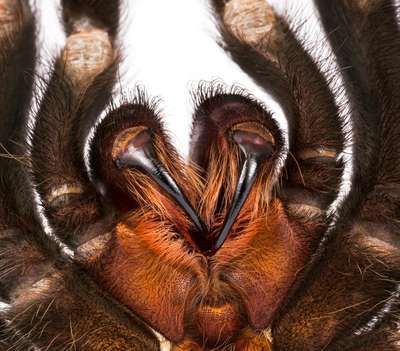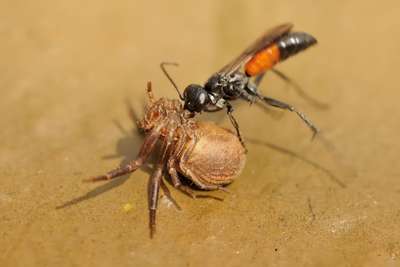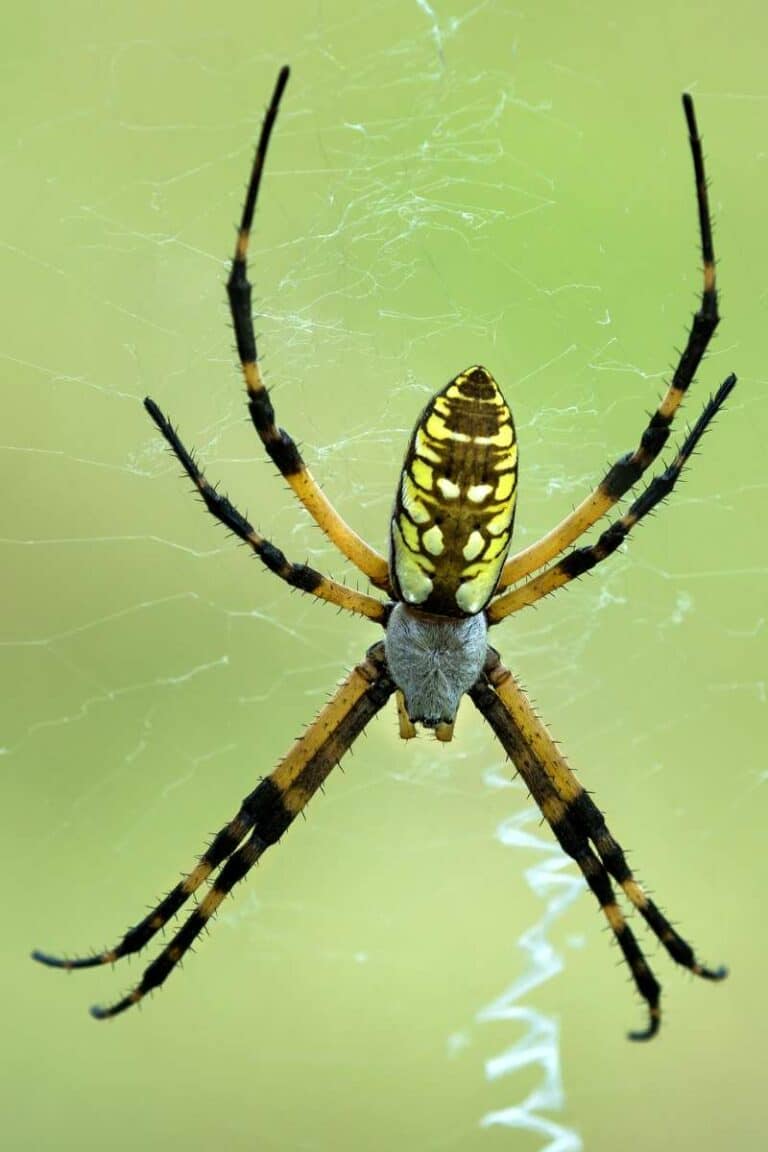Daddy long legs is a name people throughout the eastern and southeastern United States use to describe a spindly creature with eight long, threadlike legs, and a tiny body. Unfortunately, these characteristics describe several different creatures, such as those commonly referred to as “harvestmen”, “cellar spiders”, and “dust spiders”. This leads to a lot of confusion about the creatures that have eight long, threadlike legs, and tiny bodies. This post will clear up the confusion about “daddy long-legs” – what they are, what they do, how they live, and why we should care.
Are “daddy long-legs” spiders?
The term “daddy long-legs” can refer to species within two separate sub-groups under class Arachnida: family Pholcidae and order Opiliones. Pholcid “daddy long legs” are spiders but opilionid “daddy long legs” are not. All spiders are arachnids; not all arachnids are spiders.
Read on for more details about the differences between these two arachnids.
Class Arachnida includes species that naturally have four pairs of legs; no more, no less. This is one of several characteristics that distinguish arachnids from all other arthropods and thus is an important key to identification. If an animal naturally has eight legs (barring leg loss as a result of injury or autotomy – see below), it is an arachnid. If it has anything other than eight legs, it must be an arthropod classified in one of the many other classes. For example, insects have three pairs of legs while centipedes in class Chilopoda and millipedes in class Diplopoda have many more than four pairs.
While the presence of eight legs indicates an arachnid, additional characteristics are used to further divide arachnids into different orders, such as Araneae (spiders), Opiliones (daddy long legs), and Acarina (mites and ticks). So what additional characteristics define “spiders”? Why are pholcid daddy long legs considered “spiders” but opilionid daddy long legs aren’t?
Body shape and appearance
Both the pholcid and opilionid types of daddy long legs hold their bodies low to the ground, slung between their high, arched, multi-jointed legs making them appear similar at first glance. But their bodies are shaped differently.
Opilionid daddy long legs have pill-shaped bodies with no differentiation between cephalothorax and abdomen; they just look like one round piece of eight-legged arachnid. Pholcid daddy long legs have traditional “spider”-style bodies made up of distinct cephalothoraxes and abdomens, separated by “waists” or pedicles.
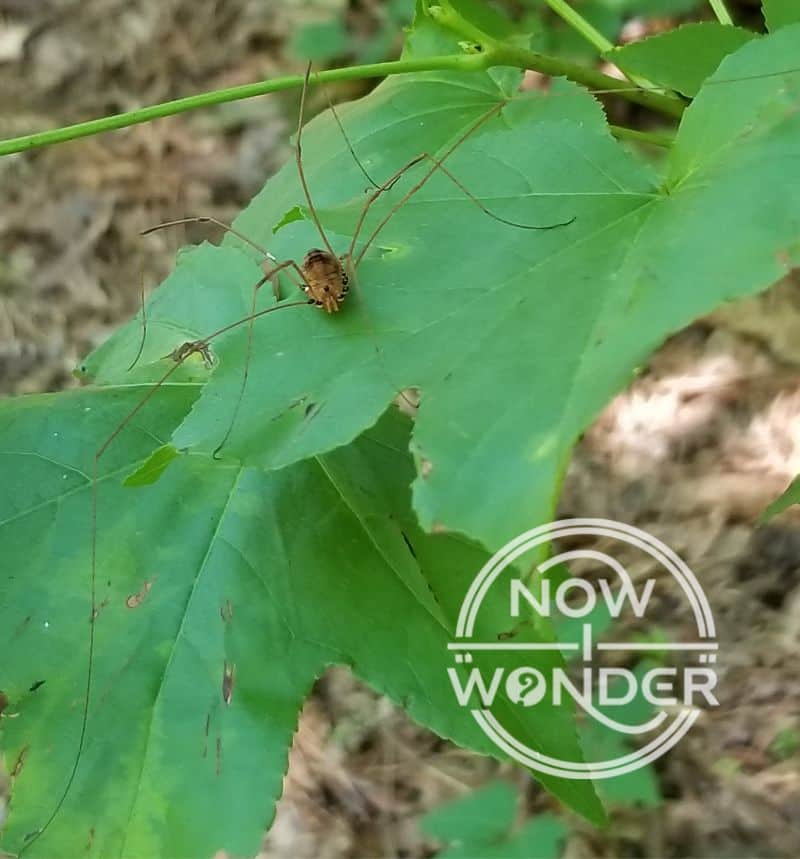
Ability to spin web silk
Spiders are synonymous with spinning silk and building webs and since pholcid daddy long legs are spiders, they have this ability. They build their webs in quiet, dark corners and often hang upside down in their webs, waiting for prey to come along.
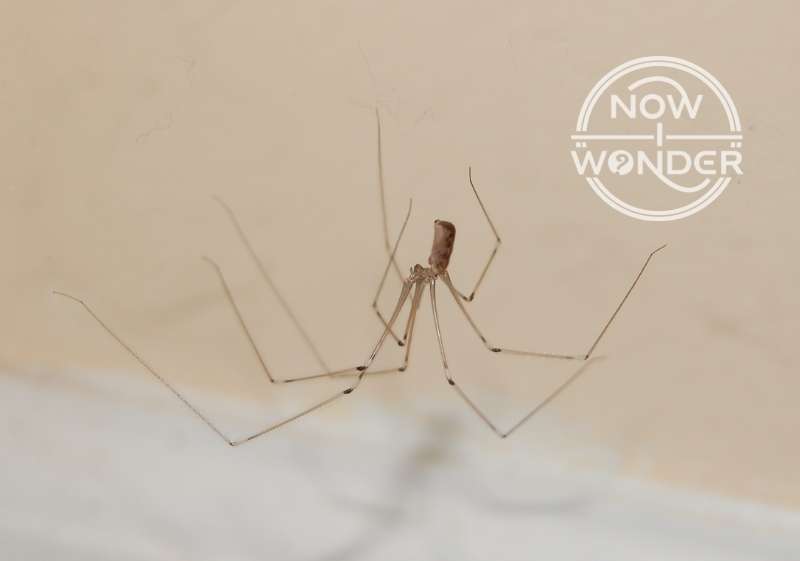
Opilionids, on the other hand, have no ability to spin silk and can’t make webs. If you see a pill-shaped body with eight legs in or on a web, it is an unfortunate opilionid daddy long legs who wandered too close to a spider’s web and is now on the lunch menu.
Presence or absence of venom glands
Like many spiders, pholcid daddy long legs produce venom and inject it into their target prey species through specialized fangs that contain channels or tubes through which the venom flows once the fangs pierce the victims’ bodies. The venom is a chemical toxin or combination of toxins that chemically subdues or kills the target prey species. Spiders use their venom both to obtain food and also to defend themselves when threatened.
Opilionid daddy legs lack both the venom glands required to create venom and the type of fangs required to channel the venom into prey. While they are able to manufacture and secrete noxious chemicals when threatened, this is not the same as being “venomous”. It is a defensive adaptation only; smelling and tasting horrible may help an individual opilionid avoid being eaten but it doesn’t help the opilionid daddy long legs obtain food.
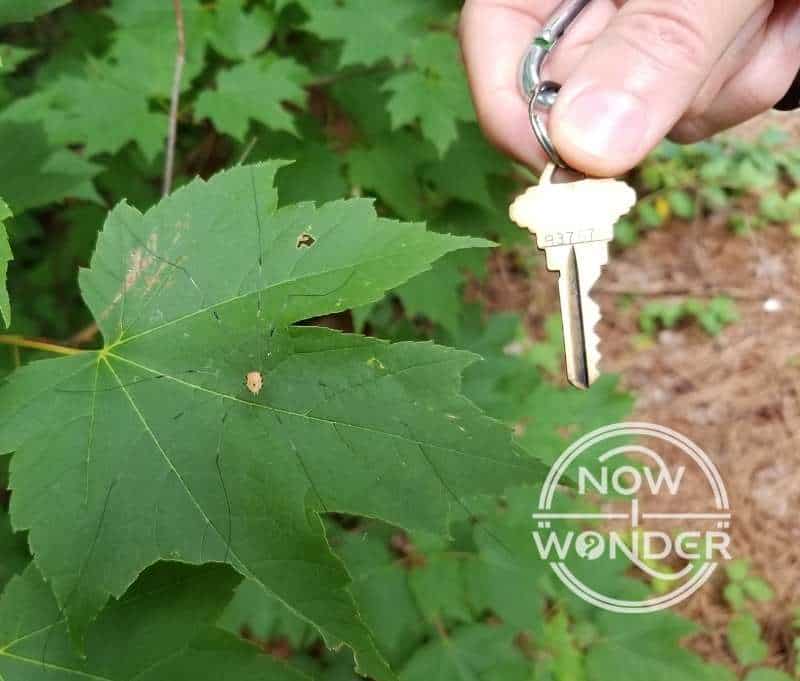
Use different primary senses
Opilionid daddy long legs have at most two eyes. Each eye is positioned on the end of a short stalk that can be rotated to give opilionid daddy long legs more information about movement in their near environment. When present, their eyes function as light sensors; these arachnids see the world in changing light and shadow. Many species are nocturnal so being able to see detail well is not as vital as it might be if the arachnids were active during the day (Lehmann et al, 2016).
Depending on the species, pholcid daddy long legs have either three or four pairs of eyes arranged on the front of the cephalothorax and better vision than opilionids.
Both types of arachnids use their legs to sense their world but in different ways.
Opilionids rely on smell and taste to gather information about the world around them and find food. Their second pair of legs are covered in sensory structures; these arachnids wave these long, wiry legs through the air to smell and taste the airborne molecules wafting across the sensory cells.
Pholcid spiders use their long legs to sense vibration, rather than air molecules. These arachnids build webs that vibrate when prey becomes entangled within them and struggle. The vibrations transmit along the individual web strands, alerting the pholcids to the presence of prey.
Live in different places
Opilionid daddy long legs live under logs and leaf litter, most often in forests as opposed to meadows (Slavomir et al, 2021) and don’t deliberately enter houses or buildings. They are more prone to dehydration than spiders and other arachnids so stay in areas that remain moist and are sheltered from the sun.
Pholcid daddy long legs thrive in houses and buildings due to a pleasing combination of temperature and humidity, availability of quiet, undisturbed, dim corners in which to build their webs, and relative lack of dangerous predators.
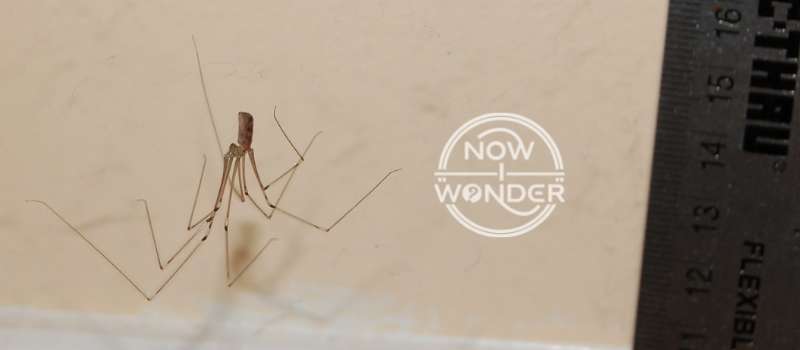
Eat differently and different foods
Opilionid daddy long legs are omnivores. They eat a variety of small arthropods, such as insects and springtails, other invertebrates, plant material, and fungi. These arachnids are primarily scavengers of their animal food, although they will hunt and kill prey if it is small and vulnerable. For the most part, opilionid daddy long legs can simply walk up to their food and begin eating.
Pholcid daddy long leg spiders, on the other hand, are active hunters who attack live prey that can either escape or fight back. They must be quick and endowed with weapons and skills that allow them to overpower their prey without sustaining injury themselves. These spiders swiftly wrap their prey in silk then deliver a killing, venomous bite with their fangs.
Opilionid and pholcid daddy long legs consume their food differently as well. Opilionid daddy long legs snip off chunks of food and swallow it whole, while pholcid daddy long legs must liquefy the innards of their prey before sucking the fluid out for nourishment.
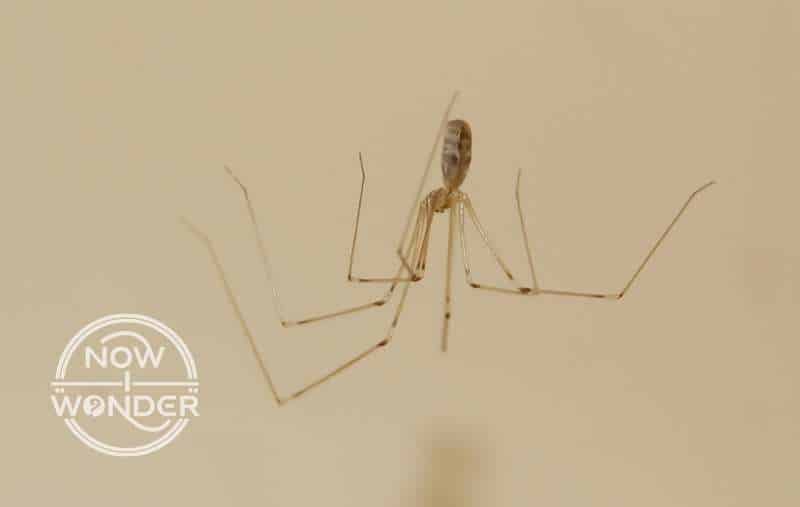
Tolerance of others
Opilionid daddy long legs tolerate other individuals easily. Usually they are widely dispersed across their habitats, in part because of their omnivorous eating habits – they must range across their environments to find food. But sometimes, opilionids gather together in a small space in huge numbers, possibly for warmth and protection from predators.
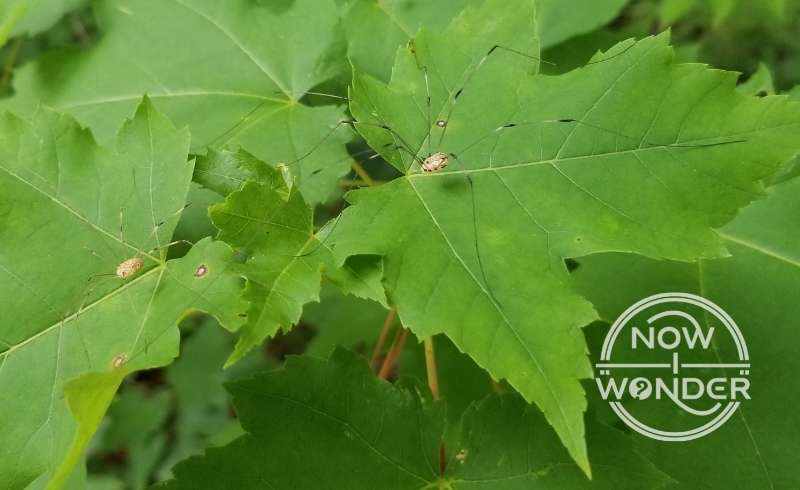
The gregariousness displayed by opilionids is not shared by pholcid daddy long leg spiders. Pholcids are much less tolerant of other spiders in their close environment. Sometimes several pholcids can be found living so closely to each other that their webs intertwine but they exist in an uneasy truce. They are dedicated predators and all is well as long as food is readily available for each spider in the area. But if one spider gets a little too hungry, it will leave its web and hunt its brethren.
Check out this video that shows just how much ground these long-legged spiders can cover in a short period of time, even across walls.
To learn more about cannibalism in spiders, check out my post “What are wolf spiders?“.
Offense and Defense
It is a law of nature that every organism is ultimately consumed by another organism at some point in its life cycle and both types of arachnid daddy long legs are no exceptions.
Besides the usual defensive behaviors such as hiding and running away, opilionids secrete noxious chemicals to avoid being eaten. These toxins smell and taste horrible to at least some potential predators and can sicken others if the daddy long legs is consumed.
One study of the chemical defenses of the opilionid Goniosoma longipes showed that the secretions “repelled seven ant species, two species of large wandering spider, and one frog species, but was not an effective defense against an opossum” (Machado et al, 2005).
Nature’s arms race always results in an offense that can defeat a defense. But the ability to create and secrete these chemicals gives these arachnids a “fighting chance”, despite it being a passive defense. nature.
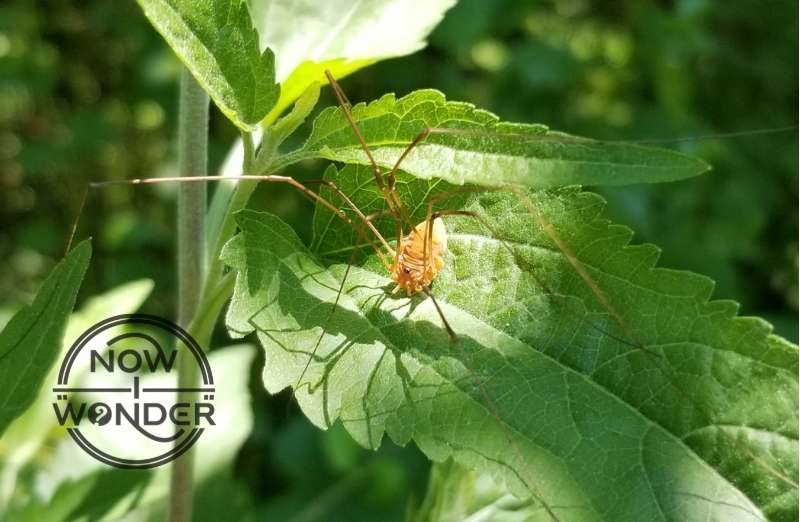
Another means by which opilionid daddy long legs avoid predation is by allowing legs to break off when grabbed, an ability called “autotomy”. The leg continues to twitch after separation from the arachnid’s body, which can keep the predator occupied while the daddy long legs escapes on its remaining seven legs. Amazingly, these arachnids can recover their full mobility in about two days, even after a loss of up to three legs (Escalante, Badger, and Elias, 2020).
The daddy long legs in the photo below is an example of an individual who is surviving just fine with only seven legs; presumably the eighth was lost through autotomy.
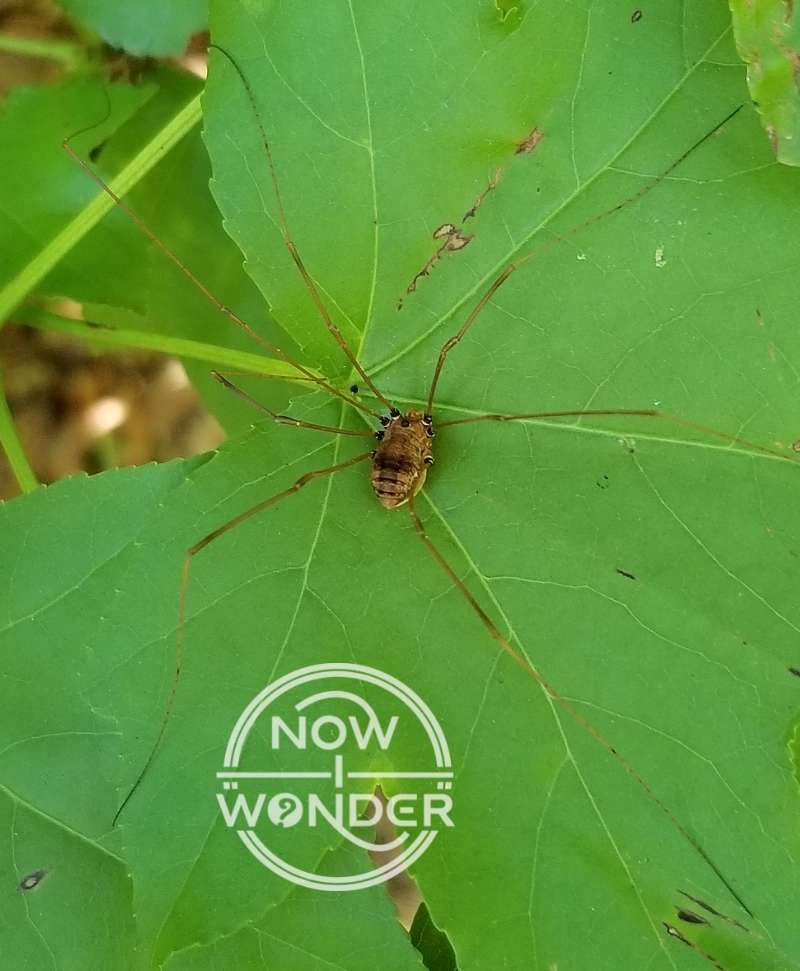
Other animals practice forms of autotomy to avoid being eaten. To see how this strategy works in the lizard world, check out my post “What are skinks?”.
While pholcid daddy long legs spiders also run and hide, they also use more offensive measures to defend themselves. As spiders, they have fangs, venom, and tend to be more powerful for their size than opilionids since they evolved as active hunters that must overpower their prey.
Pholcid spiders will also “whirl” if approached in their webs. They swing their bodies in circles very quickly, relying on the tensile strength of their webs to increase the momentum. This may make it harder for predators like jumping spiders that rely on vision to time their attacks effectively.
Conclusion
The common term “daddy long legs” is descriptive as far as it goes but, as this post shows, it doesn’t go far enough. The two types of arachnids that this term can be applied to are very different from each other. But both are important, interesting, and downright wonderful.
Related Now I Wonder Posts
For more information about spiders, check out these other Now I Wonder posts:
- What are wolf spiders?
- Jumping Spiders #1 – An Introduction
- Jumping Spiders #2 – A look at their incredible vision
- Jumping Spiders #3 – A detailed look at a special skill: Jumping
- Jumping Spiders #4 – As Predators
- Jumping Spiders #5 – As Prey
- Are spiders bugs?
- Do spiders have teeth?
- Do spiders have blood?
References
Adams, Richard J.. 2014. Field Guide to the Spiders of California and the Pacific Coast States. Berkeley: University of California Press.
Bradley, Richard A.. 2012. Common Spiders of North America. Berkeley: University of California Press.
Escalante I, Badger MA, Elias DO. 2020. Rapid recovery of locomotor performance after leg loss in harvestmen. Scientific Reports (Nature Publisher Group). 10(1). Available at: DOI:10.1038/s41598-020-70557-2
Lehmann T, Lodde-Bensch E, Melzer RR, Metz M. 2016. The visual system of harvestmen (opiliones, arachnida, chelicerata) – a re-examination. Frontiers in Zoology. 13. Available at: DOI:10.1186/s12983-016-0182-9
Machado G, Carrera PC, Pomini AM, Marsaioli AJ. 2005. Chemical defense in harvestmen (arachnida, opiliones): Do benzoquinone secretions deter invertebrate and vertebrate predators? J Chem Ecol. 31(11):2519-39. Available at: DOI:10.1007/s10886-005-7611-0
Stašiov Slavomír, Kubovčík Vladimír, Čiliak Marek, Diviaková Andrea, Lukáčik Ivan, Martin D. 2021. Harvestmen (opiliones) community structure varies across forest-meadow ecotones in a biodiverse karst region. Biodiversity & Conservation. 30(4):1101-17. Available at: DOI:10.1007/s10531-021-02135-5
University of California Riverside Department of Entomology Spider Research. Available at https://spiders.ucr.edu/daddy-long-legs

